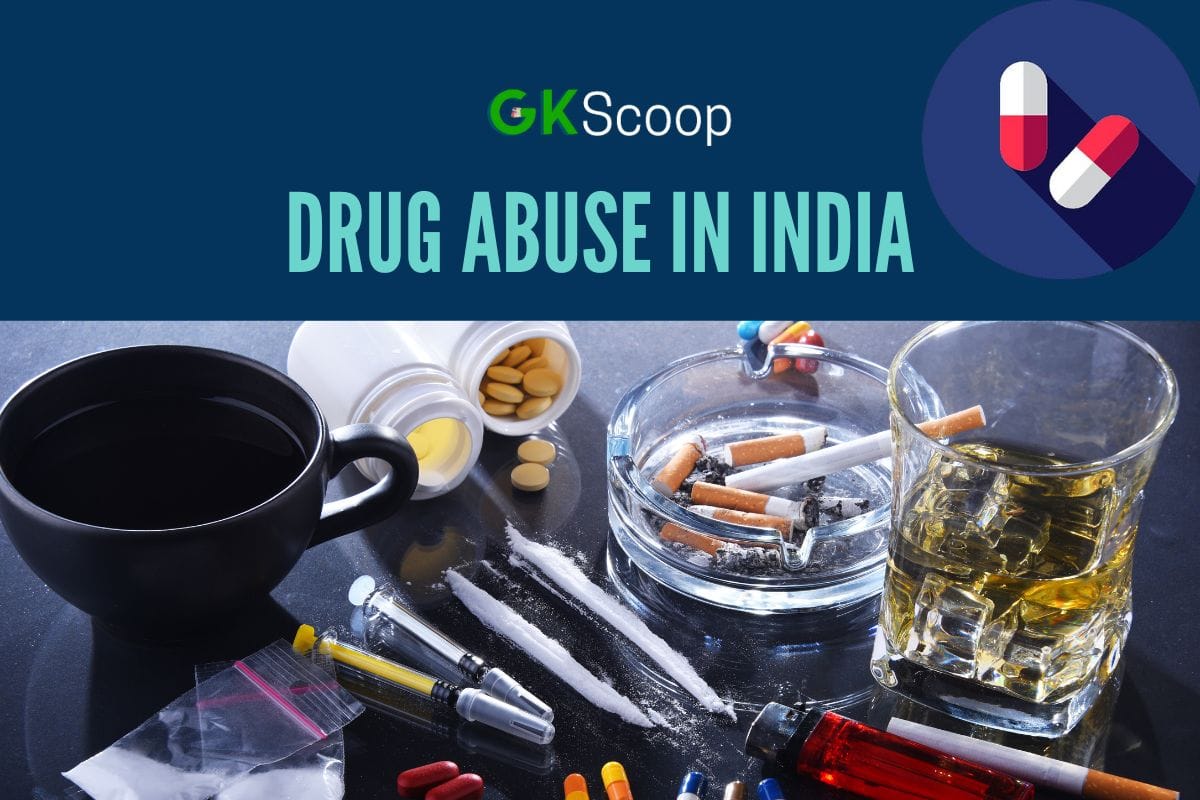
What is Drug Abuse:
Drug abuse in India: Drug abuse is when people use harmful substances like drugs or alcohol excessively and in ways that harm their health and life. It can lead to addiction, affecting relationships, work, and mental health. Drug abuse has serious consequences, causing physical, emotional, and social problems for individuals and their communities.
National Survey on Extent and Pattern of Substance Use in India” (2019):
- Prevalence of Substance Use: The survey revealed that around 14.6% of the Indian population aged 10-75 years reported using alcohol in the past year, while 2.8% reported using cannabis.
- Alcohol Consumption Patterns: Among alcohol users, 5.7% were classified as dependent on alcohol, with a higher prevalence in males (7.9%) than females (0.5%).
- Tobacco Use: Tobacco use was found to be widespread, with 28.6% of the population using it in various forms. Smoking prevalence was 19%, and smokeless tobacco use was reported by 21.4% of the surveyed individuals.
- Youth Substance Use: The survey highlighted concerning trends among youth, with 18% of them reporting alcohol use, and 1.6% reporting cannabis use in the past year.
- Urban-Rural Divide: Substance use patterns varied between urban and rural areas, with higher prevalence rates for alcohol, tobacco, and cannabis use observed in urban settings.
- Regional Disparities: There were notable regional variations, with states in the northeast and certain southern states exhibiting higher prevalence rates of substance use compared to the national average.
- Health Consequences: Substance use was associated with various health issues, including mental health problems, respiratory disorders, and cardiovascular diseases.
- Treatment Gap: The survey underscored a significant treatment gap, with a substantial proportion of individuals with substance use disorders not receiving appropriate care and intervention.
- Awareness and Education: Findings emphasized the need for enhanced awareness campaigns and educational initiatives to address substance use issues, particularly among vulnerable populations.
- Policy Implications: The survey outcomes provided valuable insights for policymakers, advocating for evidence-based strategies, increased resources for prevention and treatment, and targeted interventions to address the complex challenges posed by substance use in India.
Impacts of Drug Abuse: A Closer Look at 10 Consequences:
- Health Problems: Drug abuse can cause serious health issues, including damage to the brain, heart, and other organs.
- Addiction: People who abuse drugs can become addicted, making it hard for them to stop using even if it harms their life.
- Poor Decision-Making: Drug abuse can lead to poor judgment and decision-making, increasing the risk of accidents and risky behavior.
- Relationship Issues: It often strains relationships with family and friends, as drug abuse can lead to conflicts and misunderstandings.
- Legal Troubles: Drug abuse can result in legal problems, such as arrests and criminal charges, impacting a person’s life.
- Financial Strain due to Drug Abuse: Maintaining a drug habit can be expensive, leading to financial difficulties and even poverty.
- Work and School Problems: Drug abuse can affect a person’s performance at work or school, potentially leading to job loss or academic failure.
- Mental Health Impact: It can worsen mental health conditions, contributing to anxiety, depression, and other mental health issues.
- Social Isolation: People who abuse drugs may withdraw from social activities, isolating themselves from friends and family.
- Risk of Overdose: Drug abuse increases the risk of overdose, which can be fatal, making it a serious threat to life.
Measures taken by the Government of India to control Drug Abuse
- National Policy on Narcotic Drugs and Psychotropic Substances: Enforcing a comprehensive policy to regulate and control drug-related activities.
- Nasha Mukt Bharat Abhiyan: Launching a nationwide campaign for a drug-free India, focusing on prevention, treatment, and rehabilitation.
- National Drug Dependence Treatment Centre (NDDTC): Establishing specialized treatment centers for individuals struggling with drug addiction.
- Pradhan Mantri Jan Aushadhi Pariyojana: Making affordable generic medicines available, reducing the economic burden on individuals seeking treatment.
- Educational Programs to Prevent Drug Abuse: Implementing awareness programs in schools and colleges to educate students about the harmful effects of drug abuse.
- Rehabilitation and Counseling Centers: Setting up centers across the country to provide rehabilitation and counseling services for affected individuals.
- Border Control Measures: Strengthening border security to curb the smuggling of illicit drugs into the country.
- Community-Based Interventions: Engaging local communities in anti-drug initiatives to create a supportive environment for prevention and rehabilitation.
- International Collaboration: Collaborating with international organizations and neighboring countries to address transnational drug trafficking.
- Media Campaigns: Utilizing media platforms to disseminate information and messages against drug abuse, reaching a wide audience for greater impact.
Conclusion:
Drug abuse is a serious issue that can harm individuals and communities. We’ve explored its various aspects, including health, relationships, and society. It’s crucial for everyone to be aware of its dangers. Governments and communities must work together, providing support, education, and treatment to help those affected. By fostering understanding and taking collective action, we can strive for a healthier and drug-free future.


